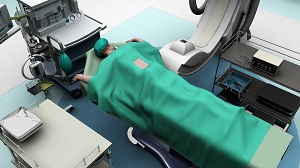
With revision spine surgery, we correct symptoms that linger after a previous surgery. A second surgery is never ideal and no patient wants to hear they need a revision; however, in some cases a revision is necessary to correct issues not addressed by or even created by a previous surgery. Revision spine surgery can address symptoms and problems related to:
- The formation of scar tissue around an incision
- An unsuccessful surgery
- Surgery performed at the wrong site
- Surgery in a non-eligible candidate
- An improper diagnosis
- Post-surgical complications
The goal of any revision surgery is to reduce pain so you can get back to normal activities. Revision spine surgery is only performed in certain circumstances, such as:
- The re-herniation of a disc
- An infection
- Pseudoarthrosis
- A hardware failure
- A non-surgery related spine degeneration
- Flat back syndrome
- Instability
- Degeneration in an adjacent segment
A variety of procedures may be performed as revisions and thanks to recent advances many revisions can be performed using minimally invasive techniques. This helps reduce the risk associated with surgery and allows the patient to recover much more quickly than traditional surgical methods.
Related Topics
- Minimally Invasive Spine Surgery (MISS)
- Spinal Cord and Nerve Decompression
- Revision Spine Surgery
- Spinal Fusion Surgery
- Scoliosis Treatment
- Spinal Cord Stimulator
- Foraminoplasty
- Spinal Manipulation
- Revision Spinal Surgery
- Spine Osteotomy
- Spinal Deformity Surgery
- Possible Complications of Spinal Surgeries
- Proper Lifting
- Treatment Options for Back and Neck Pain
- Healthy Back Tips
- Nutrition and your Spine
- Piriformis Muscle Injections
- Sacroiliac Joint Injections
- Epidural Spinal Injections
- Facet Injection
- Medications
- Spine Rehabilitation
- Post-Operative Instructions

